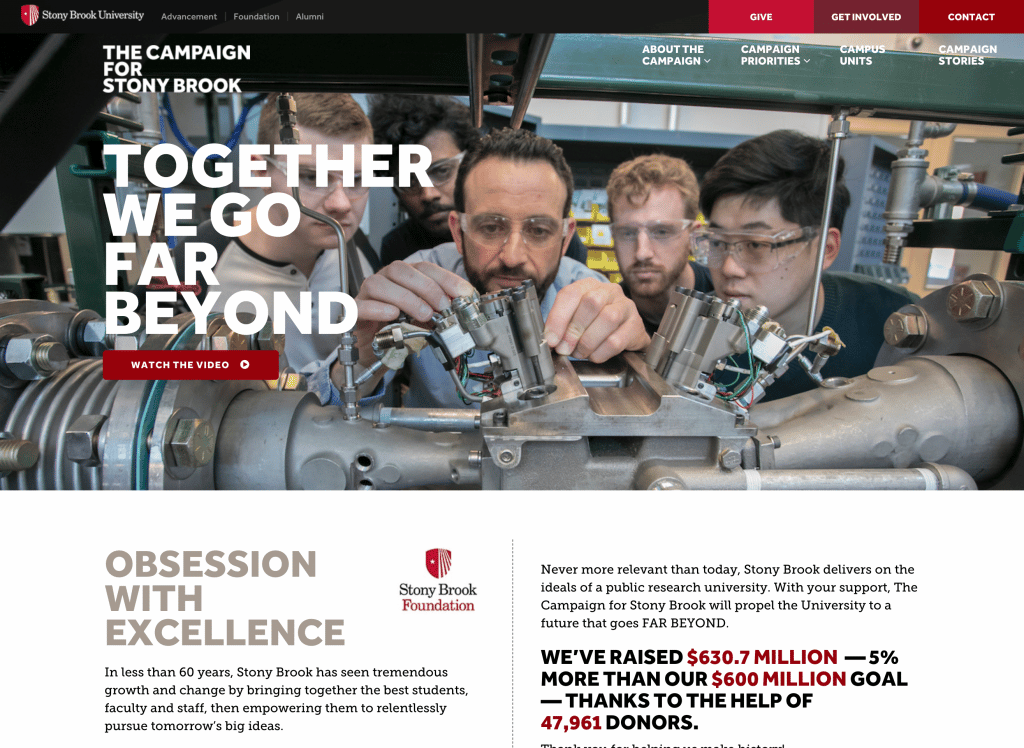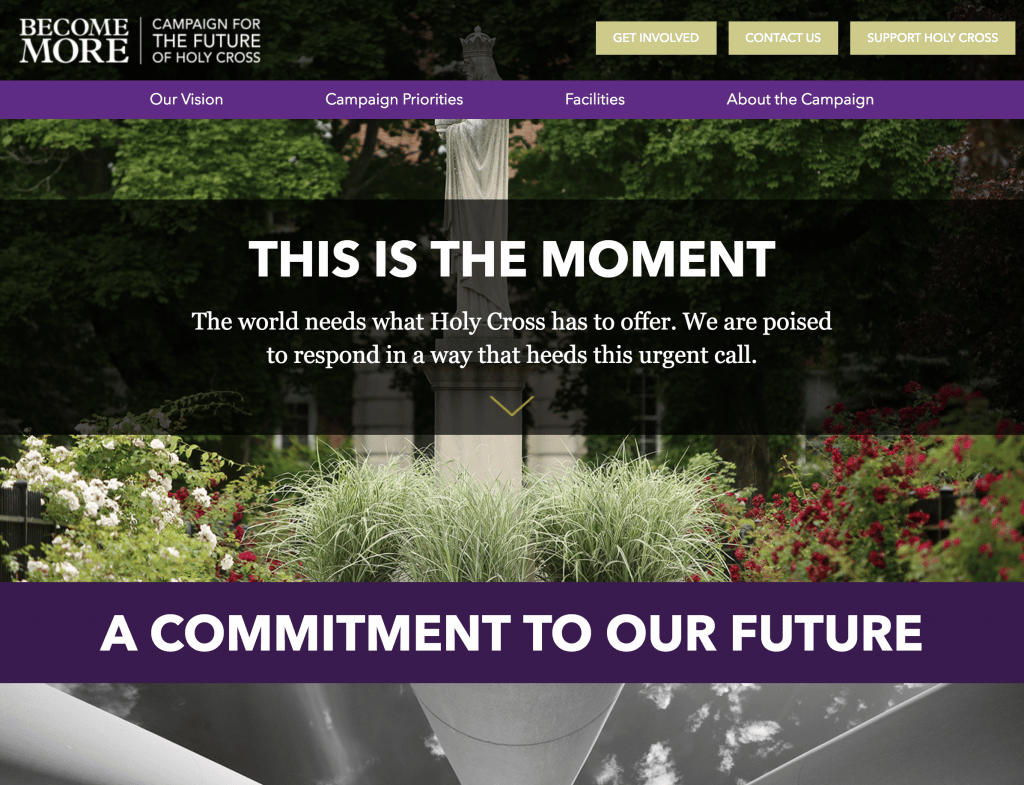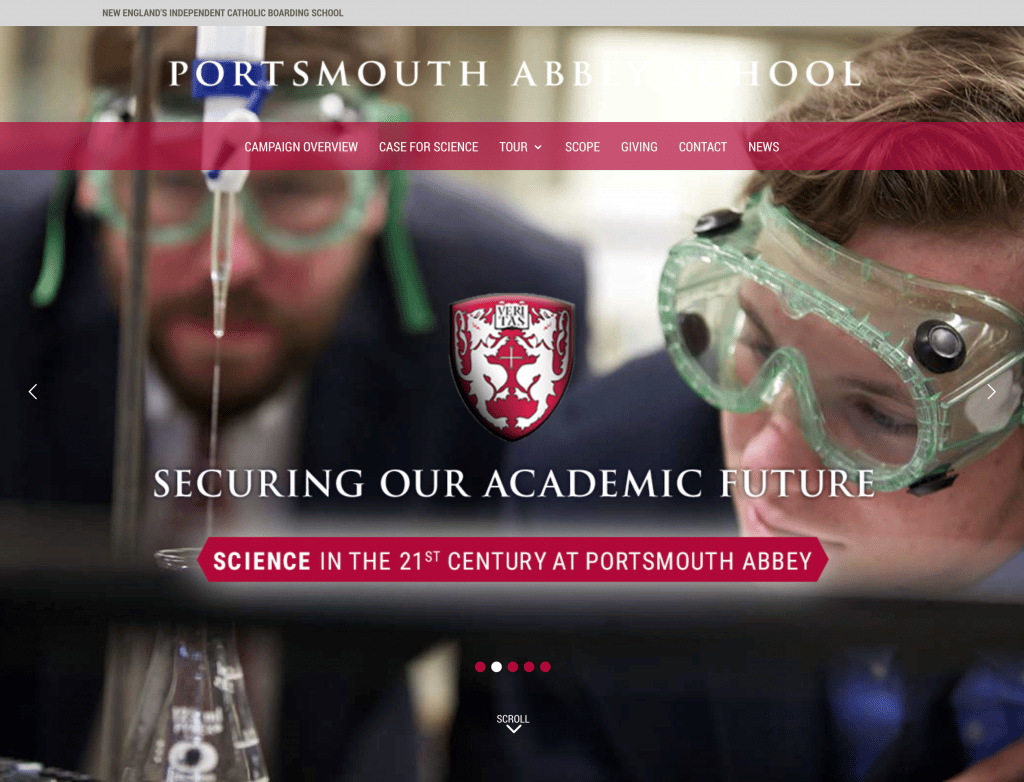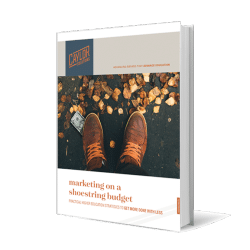Hispanic Student Recruitment Strategies: How to Increase Enrollment & Engagement
Discover proven Hispanic student recruitment strategies that boost enrollment, from bilingual marketing to community engagement.
Marketing Campaigns
There’s a lot of excitement when it comes to capital campaigns — and with it comes a ton of pressure for education marketers. Here’s a starter’s guide for anyone marketing a capital campaign for the first time.
Capital campaigns are large, multi-year projects with an enormous monetary goal.
So even if it’s not your first capital campaign, launching the marketing plan for the capital campaign is both thrilling and frightening.
With capital campaigns, the stakes are higher and the outcomes are so widely published, it’s nerve-racking.
All of the marketing principles that we talk about here in the Caylor blog still apply. But here are some special things you’ll have to do as an education marketer to make your capital campaign marketing a success.
If your college, university, or independent school does not have an overarching marketing plan, you need one.
Check out my two-part series 10 Components of a Successful Education Marketing Plan (Part 1) for a look at how to get started on that.
But assuming that you have an organizational marketing plan, you will need to create another marketing plan with almost all of the same components just for the capital campaign.
Your capital campaign marketing plan should be complementary to your larger plan. Capital campaign marketing should never supersede or take the place of the activities of your ongoing enrollment marketing.
Enrollment is and always will be the ultimate end goal for you as an education marketer.
However, successful capital campaigns last for years. This is not a month-long messaging campaign you can whip together with a simple office to-do list.
The capital campaign is your organization’s most sophisticated, intensely focused effort at improving its educational, residential, and athletic offerings to future students. As such, it will require the same level of sophistication and intense effort on your part as a marketing team.
Spend the time to create a multi-year marketing plan to guide your work and keep your team on track over the years as attentions wane and campaign leadership changes.
Believe me. Two years into the campaign, you’ll be grateful you wrote everything down into your capital campaign marketing plan.
Not only will it help you stay on track with your original plans, it will also give you a place for adjustments to be made and communicated with your team along the way.
This is an important step to take because your marketing personas for the capital campaign will be different than the audiences you reach out to in enrollment marketing.
Capital campaigns generally have three main audiences:
Your particular campaign may have some unique marketing personas, but these are the three almost all educational capital campaigns must address.
I encourage you to take time to think deeply about what makes these audiences different than your enrollment marketing audiences like prospective students and parents.
To begin with, they’re older. They have some familiarity with your education brand. Most of them are well down the road in their career and life goals, and are now interested in making philanthropic investments.
Your marketing personas will, of course, need to be more defined. But the point here is that you need separate personas for your capital campaign marketing plan because they will be entirely different than your everyday audiences.
Successful education marketing is all about anticipating and answering the questions your audiences look to your brand to answer.
The questions your capital campaign audiences are asking of your school will be altogether different than those of your enrollment marketing personas — so again, take the time to think this through.
In fact, this step is so important, I recommend that you do some market research.
This may seem like a lot of work, but it’s worth it! Your marketing messages will be clearer and more compelling to your audience.
Creating compelling language for your audiences will be key to reaching your capital campaign goals.
That’s why the last two steps are critical. You have to know who you’re marketing to and what questions they have before you can come up with messaging that resonates with them.
The typical categories for campaign language you’ll need to create are a theme, a positioning statement, and taglines.
Your campaign theme is the overall concept you use to unite all of your marketing messages. It is the big idea that shows why the capital campaign is necessary.
All the language, and even the design elements, should spring from your capital campaign concept.
Positioning Statements and related taglines are catchy, short, memorable phrases that encapsulate the campaign theme. The best taglines communicate the emotional motivation behind the campaign in about seven words or less.
Having positioning statements and taglines pre-written and approved by the marketing leadership and capital campaign leadership committee is extremely helpful to keeping your messaging and voice consistent across all marketing materials.

Screenshot of https://www.stonybrook.edu/campaign/

Screenshot of https://www.holycross.edu/becomemore

Screenshot of https://portsmouthabbeyscience.org/
With the right language to convey your capital campaign theme, you can begin designing colors, logos, typography, layouts, and other design elements that will resonate with your audience.
I recommend creating a “moodboard” for your capital campaign marketing plan so that you can see how your theme, slogans, and visual design elements work together.
Remember to keep all of your design elements properly aligned with your capital campaign audience. Whimsical concepts, colors, and typography will probably not create the trust you need for large donations.
Too many schools choose not to even consider developing a microsite for their capital campaign simply because it is a lot of work and requires allocating budget resources.
But it is a part of the cost and success of a proper capital campaign.
As you can see in the slogan examples I gave you above, each of these schools has created a microsite devoted to capital campaign. It’s a worthwhile investment as the campaign will last for several years at least, and this will become the campaign’s marketing hub during those years.
Common capital campaign microsite pages are:
A capital campaign is not complete without a full array of print materials that take your marketing messaging into the offline world.
Fundraisers will need a printed case statement to leave with the potential major donors they visit.
The case statement is a beautifully designed brochure explaining why their leadership gift to the capital campaign is so important and is a tangible piece they can give to their friends when they explain why they’re donating a million dollars to their alma mater.
Other print materials may include:
If so, we at Caylor Solutions would be happy to put our decades of educational marketing experience to work for you.
We’ve helped numerous colleges, universities, and independent schools conceptualize their capital campaign themes, slogans, and designs. We’ve also helped them execute on their marketing plan by developing powerful campaign microsites.
If your school is launching a capital campaign, and you’re looking for an experienced marketing partner, let’s talk!
Set yourself free from your shrinking marketing budget with my popular ebook Marketing on a Shoestring Budget! This ebook is jammed with practical ways to produce high-quality marketing on the cheap.
Inside, I’ll show you proven marketing tactics like…
No hype. No pie in the sky. Just real solutions for getting the job done with the budget you’ve got.
Featured image by littleny via Adobe Stock
Subscribe to The Higher Ed Marketer podcast today!